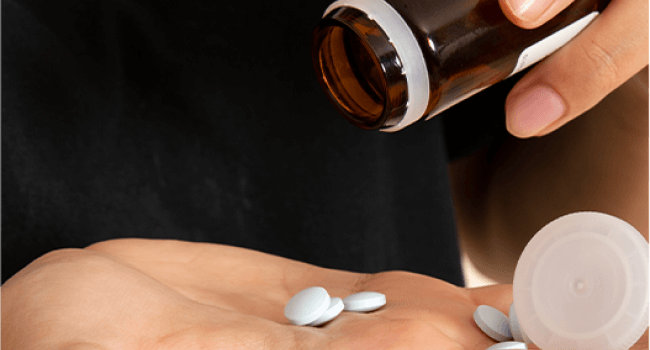Highlights
- Ritalin’s half-life is one of the most important factors affecting how long its active ingredient, methylphenidate, stays in your system.
- Once-a-day dosing of extended-release Ritalin can be prescribed depending on the patient’s needs, and the half-life of this formulation is longer compared to the immediate-release formulation.
- Urine analysis is the most common test used to check for methylphenidate use.
- Ritalin is a Schedule II controlled substance that can be prescribed for ADHD or narcolepsy. Following your clinician’s instructions and having regular follow-ups are necessary to check for side effects and avoid misuse and addiction.
When your healthcare provider prescribes you Ritalin, you may want to know how long it can stay in your system. Ritalin (methylphenidate) is a controlled substance: it is a stimulant medication that has a relatively short half-life and is absorbed quickly, which contributes to its potential to cause addiction. A misuse of Ritalin happens when one takes it at increased doses or has shorter intervals between the doses, which can be dangerous. This article will help you understand why it’s necessary to take Ritalin as prescribed and how long it stays in the body.
What Is Ritalin?
Ritalin is the brand name of a medication containing methylphenidate, which is a central nervous system stimulant. Methylphenidate is one of the medications used to treat attention deficit hyperactivity disorder (ADHD). It increases the levels of certain neurotransmitters in the brain, thus improving communication between brain cells and enhancing focus and attention.
Other stimulants commonly prescribed for this condition include amphetamine salts (Adderall), lisdexamfetamine (Vyvanse), dextroamphetamine (Dexedrine), and dexmethylphenidate (Focalin).
Use and Misuse of Ritalin
The prescribing of methylphenidate is highly regulated because it is a Schedule II controlled substance and has a risk of misuse and abuse.
How Long Does It Take to Feel Ritalin's Effects?
Methylphenidate is absorbed quickly after ingestion. Most patients can feel it working after
What Is a Ritalin Half-Life, and Why Is It Important?
Your healthcare professional will choose a Ritalin dose and formulation according to your needs in ADHD management, and this is where understanding the concept of half-life is essential.
The average half-life of methylphenidate is short,
If a person has a busy lifestyle, and remembering to take medication multiple times a day is difficult, this is where extended-release form can be preferred to ensure an uninterrupted treatment process. This formulation offers 6 to 8 hours of continuous relief from ADHD symptoms with one dose.
Note that the dosage details and the onset of action are mentioned for informational purposes only and cannot be used as an instruction. Always consult your healthcare provider for individualized instructions on Ritalin use.

Factors Affecting How Long Ritalin Stays in the Body
So, half-life influences how long methylphenidate remains in your system. But it can be difficult to identify the exact duration without knowing your health history. For example, these are the
- The patient’s age: The half-life is lower
in children than in adults[5] . - Drug interactions: Taking Ritalin with other medications might affect absorption, metabolism, and elimination.
- Possibly severe kidney or liver disease: Unfortunately, there are no studies for these situations.
- A patient’s individual metabolism: Everybody is slightly different.
- Body mass index (BMI): A higher body mass means a faster breakdown of Ritalin.
How to Get Ritalin Out of Your System
You now understand that Ritalin’s half-life is one of the most important factors affecting how long it can stay in your system and that circumstances out of your control can also influence it.
There is a rumor that drinking lots of water will flush the methylphenidate from your system more quickly by producing more urine, but no studies back this up. You just need to wait until the absorption, metabolism, and elimination cycle runs its course naturally.
How Long Does Ritalin Stay in Your System?
There is drug testing to detect Ritalin, but the drug test results may differ depending on the type of sample used and the time from the last dose. For example, a blood test might be negative, but the urine test appears positive.
These tests were first developed to monitor compliance, meaning to detect methylphenidate and make sure patients were taking their medication. But they are now also used to oversee Ritalin abuse and addiction treatment.
Before awareness was raised about the diagnosis of adult ADHD, historically, most of the patients on Ritalin were children. It is difficult to run blood tests in this case, so other tests were investigated, such as
Urine Tests
This is the most common drug test used, and it can detect methylphenidate for an average of 3 days
Blood Tests
Blood tests are invasive, and Ritalin’s
Saliva Tests
Although saliva is easy to sample and it is difficult to cheat the test, the detection window is short and therefore limiting, similar to blood tests.
Hair Tests
Methylphenidate can be found in hair follicle tests for up to 90 days.
Ritalin Abuse and Addiction
We have already discussed that Ritalin is a Schedule II controlled substance that falls in the same category as
Addiction to this medication occurs when there is any of the following:
- Continuously using methylphenidate due to a strong desire.
- Difficulty controlling the desire for methylphenidate, even when there are negative consequences.
- Prioritizing methylphenidate use over daily activities.
- Developing a tolerance to methylphenidate, meaning higher doses are needed for the same effect.
- Experiencing withdrawal signs and symptoms when stopping the medication, indicating physical dependence.
If you take your dose orally at the times prescribed by your healthcare provider, addiction is improbable. People with addiction usually take substantial oral doses,
How to Take Ritalin Safely
To protect your family and friends, always keep your medication in a safe place, and never give it to others, as it may be harmful, even if they have the same symptoms. It is also important to know that it is illegal to give your methylphenidate away or sell it; you will get into serious trouble with the law if you do.
If you are worried that someone close to you is developing an addiction, you should be aware of the signs. In addition, if you are taking Ritalin, you can ask a family member to monitor you.
These are some of the behavioral signs that someone might have a Ritalin addiction or abuse problem and that you can watch out for:
- Agitated or aggressive behavior
- Hallucinations
- Delusions
- Panic or anxiety attacks
- Intermittent depressive episodes when withdrawing
If you or a loved one experiences any of these signs, please contact your healthcare practitioner immediately.
Note that booking an appointment doesn’t guarantee obtaining a prescription. The decision is at the discretion of your healthcare provider.
Ritalin Addiction Treatment
The treatment programs for Ritalin addiction are the same as those for any abused substance:
- Inpatient programs: Getting through methylphenidate withdrawal may require admission for some patients.
- 12-step programs: The most well-known 12-step program is Alcoholics Anonymous (AA), which was founded in the 1930s. However, now there are internationally recognized 12-step programs helping patients recover from many other substance and behavioral addictions, including methylphenidate.
- SMART Recovery: This is an evidence-informed program with foundations in Rational Emotive Behavioral Therapy (REBT) and cognitive-behavioral therapy (CBT).
- Other outpatient programs.
The basis of all treatment options is getting support from healthcare professionals and communities that specialize in alcohol and drug addiction. A helpful resource is the SAMHSA webpage, which lists treatment centers.
Summing Up
Hopefully, you are feeling reassured that even though Ritalin is potentially addictive, this is unlikely if taken for a registered treatment condition at the dose prescribed by your healthcare professional. In fact, Ritalin may be life-changing for your ADHD diagnosis. Your clinician will personalize the dose and formulation for you according to the severity of your symptoms and the number of hours you need your ADHD controlled each day.













